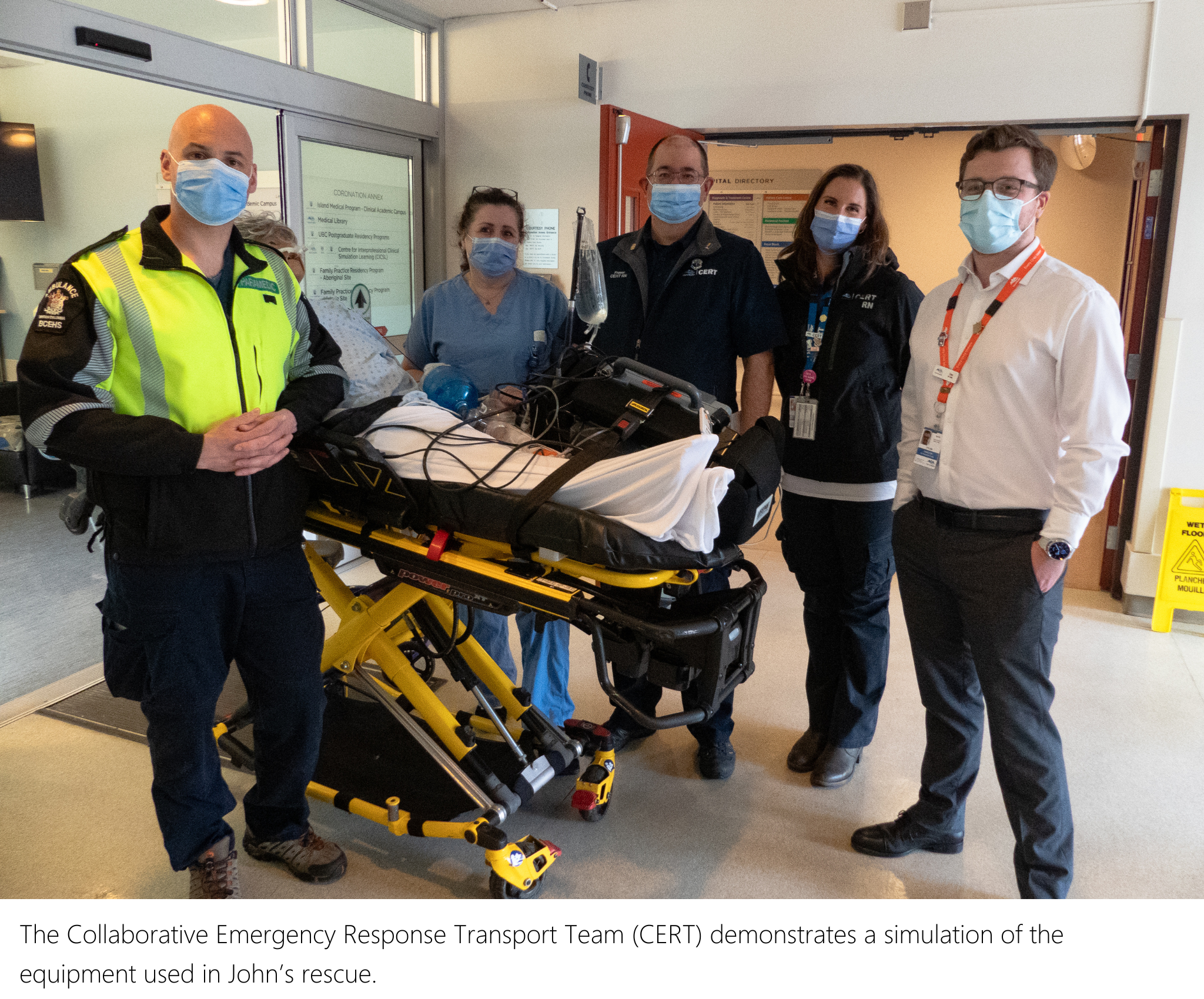
What began as a hunting trip on a picturesque November day in 2022, turned out to be a life-defining event for John Burkard and his grandson, Carter.
The two were travelling in an all-terrain vehicle along an isolated logging road at Lake Cowichan. However, their expedition quickly took an unexpected direction. While maneuvering through a turn along the narrow road, the quad’s throttle jammed at high-speed in reverse, sending them backwards down an embankment.
Carter managed to get out of the vehicle, but John ended up trapped underneath with severe injuries. Carter immediately sprang to John’s aid. The 13-year-old rescued his grandfather from under the quad and helped him up the embankment before signalling for help through a GPS tracking service.
“I remember hearing Carter being in touch with medical services. They stayed on the call with him the whole time. He did a great job,” says John.
As the two waited for help, John’s breathing became restricted. “I was badly hurt and didn’t know how it was going to end. I had a discussion with Carter that whatever happened, it wasn’t his fault.”
When paramedics arrived, John was immediately placed on a transport ventilator to sustain his breathing. The ventilator was the first in a series of life-saving medical interventions during John’s rescue and recovery. A transport ventilator is specifically designed to provide life-sustaining respiratory support to critically ill patients who need to be moved between locations. Thankfully, TB Vets Charitable Foundation, a long-time donor to the Victoria Hospitals Foundation, funded a transport ventilator, demonstrating the life-saving impact that donors have on Island residents.
Paramedics swiftly transported John to a waiting air ambulance, which flew him to Victoria General Hospital (VGH), the referral centre for trauma patients on the Island. “That’s the last thing I remember about that day,” he says.
“When I got the call, I didn’t believe it,” says John’s partner, Kim Farndon. “He knows what he’s doing in the back country. He always practices safety, especially having his grandson with him. It didn’t really hit me until I saw the air ambulance land at the hospital.”
Upon arrival at VGH, John’s condition was critical. He had suffered a fractured jaw, a broken back, several broken ribs, and extensive facial lacerations, including a punctured eye.
“They took him straight into the trauma centre,” says Kim. “We got to see him after a few hours, but then he had to be transferred to Royal Jubilee Hospital (RJH) for facial reconstruction surgery.” Unfortunately, the severity of his injuries resulted in John losing his right eye.

Over the next 31 days, John would endure multiple surgeries, five transfers between hospitals, and two weeks in a state of unconsciousness. Each step of his journey was thoughtfully guided by compassionate hospital care teams, caring family members, and a community of dedicated donors who generously ensure our hospitals are equipped with leading edge-tools for our skilled care teams. In cases like John’s, the transport ventilator plays an essential role in ensuring patients are safely transferred between hospitals and also within various areas of care at each hospital.
Between RJH and VGH, John underwent three surgeries in five days.
Throughout his lengthy stay in the intensive care unit at RJH, John remained positive. “The care there was so fantastic, I was never really worried about my condition. I couldn’t write for a while and my jaw was wired shut for six weeks, so I couldn’t really talk. But everybody in the hospital understood exactly what was going on, and I felt confident and reassured that I was going to be out of there.”
John says that whenever he needed something like a drink or a pain killer, there was always somebody there. “I would wake up, and someone was there asking how I was feeling.”
Kim also expressed trust and confidence in the exceptional care and support from staff.
“What the nurses and doctors do personally for their patients is beyond anything I’ve ever seen in my life. They need to be recognized for what they do on a daily basis,” says Kim. “If I had a question, there was always an answer—they were so helpful.”
Last year, the family celebrated Carter receiving a Good Samaritan Award from B.C. Emergency Health Services for his courageous actions to save his grandfather. Now, 18 months after the accident, John, who will be turning 70 this year, is back to doing most things he enjoys in life.
“I’m still able to go in the bush and ride a quad. Since the operation my back feels better than ever. I wouldn’t be able to do these things if I hadn’t been put back together.”
John still wears clear braces to realign his jaw, but is happy to be able to eat regular food again after getting tired of too many smoothies. Reflecting on his journey, John has nothing but praise for the team involved in his rescue and recovery—from his courageous grandson to the staff at the call centres, the emergency responders, and the hospital care teams.
“It was very impressive how everything came together. It’s a well-organized, amazing system. When you are hurt and there’s an emergency, you are number one, and that is truly amazing.”
John also acknowledges the support of the unseen heroes along the journey—the donors in our community who fund 40% of equipment in each area of care at our hospitals…heroes like TB Vets who have generously donated $1.6 million towards urgently-needed respiratory equipment at RJH and VGH, bringing life-changing results to Island resident patients like John.
“It’s important to recognize that this equipment is needed desperately in situations like I was in. I wouldn’t have survived without it. I am eternally grateful.”




